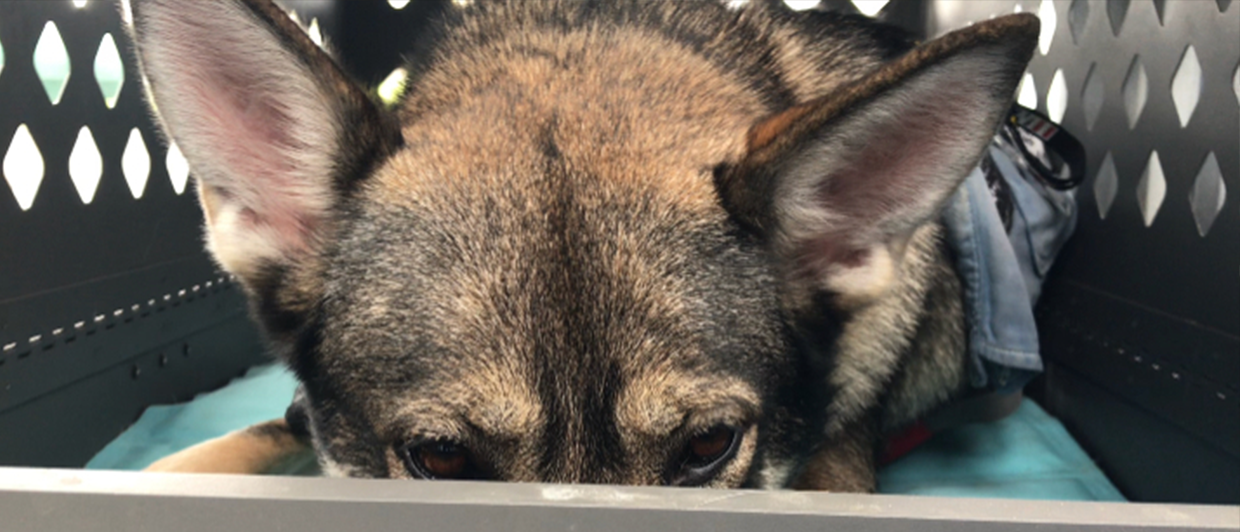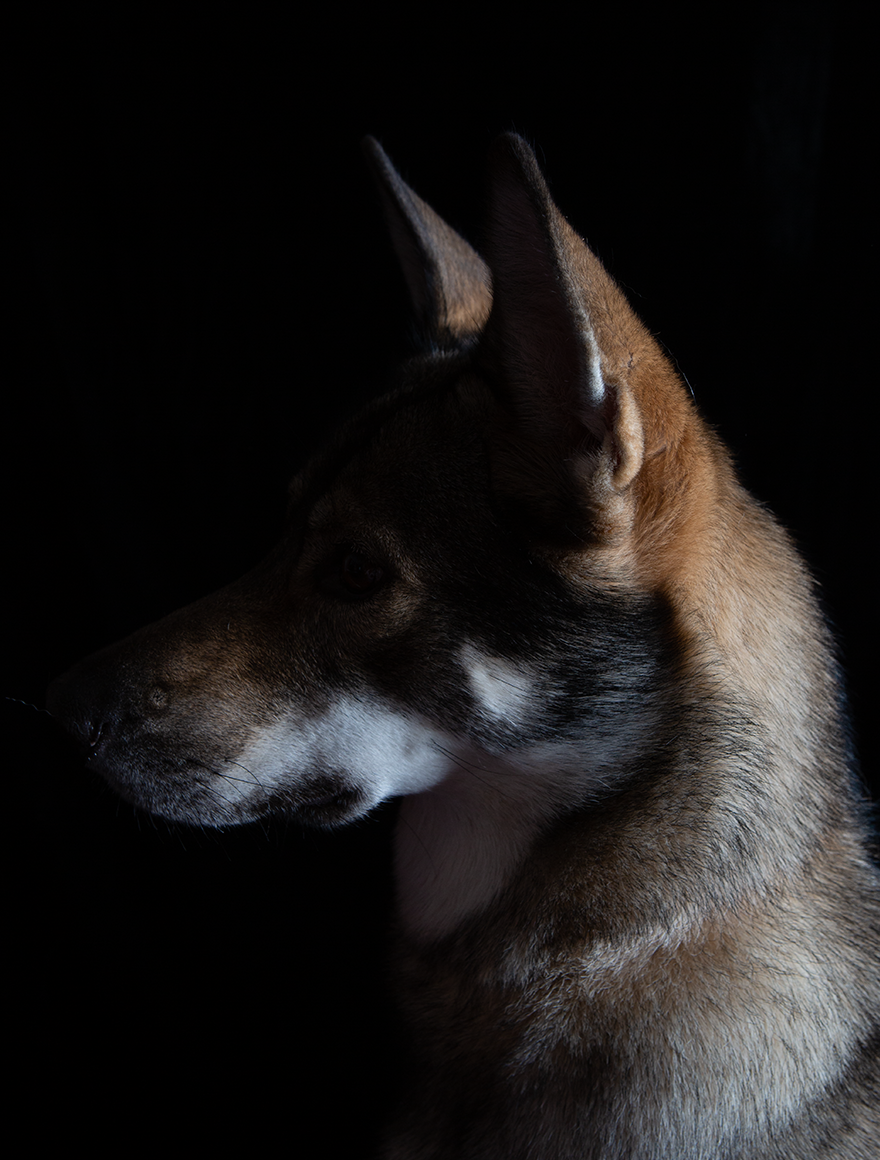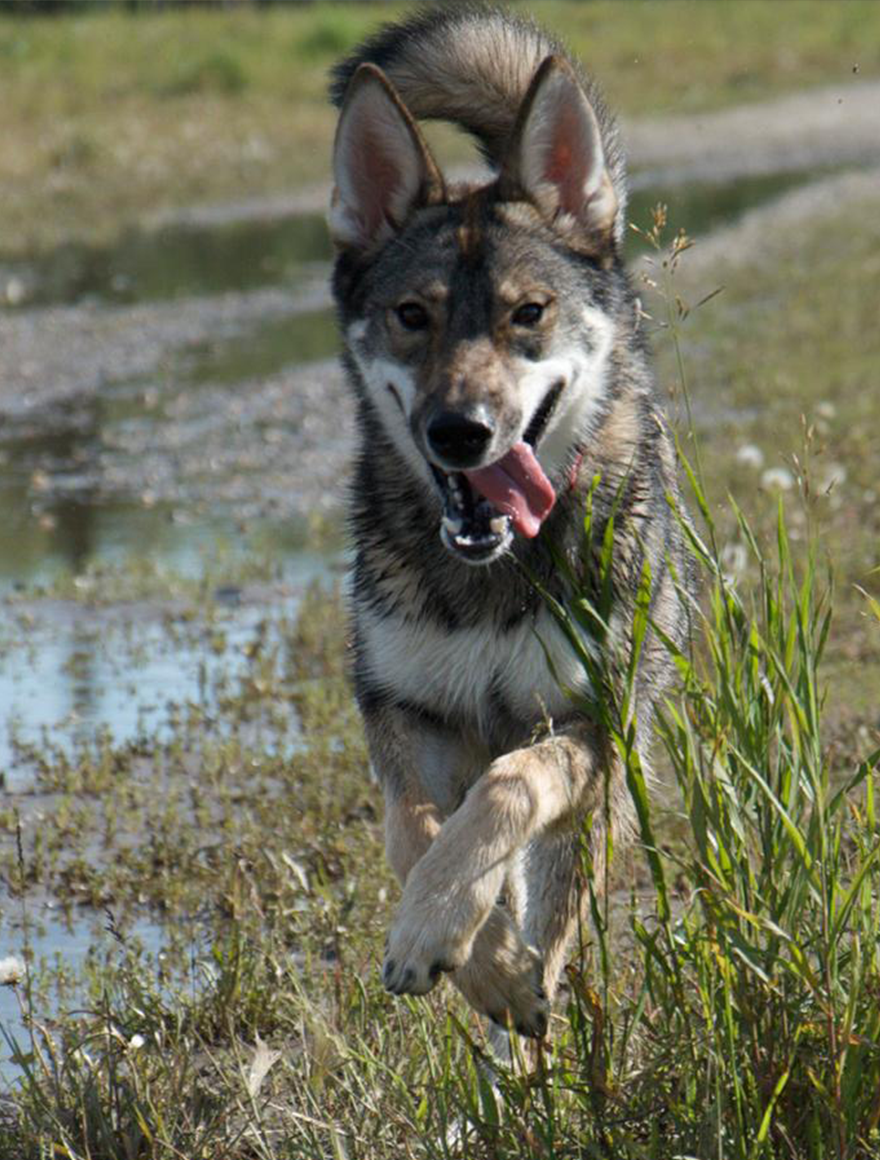Are You Ready For A Tamaskan?
A journey of adding a dog to your home is always a significant one. Let's try to make sure that the Tamaskan and Sundog are right for you.

What Does Getting A Tamaskan Mean?
- Activity & Exercise
- Training
- Grooming
- Acceptable Climate
- Original Purpose
- Off Purpose Training
- Wolfy Looks
- Separation & Isolation Anxiety
- Buyer Beware!
- Still Need More?
Tamaskans are active, energetic, highly intelligent dogs. They need enrichment, training, work, attention, and a solid schedule to be a respectable member of a family.
They are amazingly versatile dogs because of their intelligence and endurance that can excel in many different types of sport and work. That said they are an arctic breed and carry many of the traits found in that type of dog. Please see our original and off-purpose sections for more info on this area.
They thrive in new and enriching situations when exposed properly and should be stimulated mentally to prevent poor behavior and training challenges and be an amazing companion.
With the amazing intelligence, curiosity, and joy that these dogs bring to the table that means that they need training and enrichment to last a lifetime. Tamaskans do not do what makes their owners happy purely because it will please you. Many established breeds have a true drive to please their family and will work for praise, treats, or toys their entire life.
Tamaskans tend to hold fast to their trickster origins. They are quick to learn and excel from a very young age. In all of my years working animals my Tamaskan has been the easiest to train in terms of aptitude and speed, but also has been the hardest to keep motivated. The simple truth is if it brings them joy they will do it, but if they decide something is more appealing you better have a solid foundation in place or you will be laughing or crying when they go off to do their thing. This independent streak also always rears its head in their teenage years. You can have a relatively calm puppy that is easily motivated with food and praise or a favorite toy, but as they grow and realize there are other things in the world and that they are harder to stop they may push boundaries and challenge you. However, the reward for working them through to a polite and respectable adult is an unparalleled companion that will constantly bring joy, fun, and surprise to your life.
This is especially important when you consider their wolfy appearance and the risks that can pose. If you have not worked a more challenging breed in the past we can not recommend or advise that you explore this breed yet. The solid foundation we build for you can take you from a good dog to an excellent dog if you continue to dedicate the needed time and attention. Use the resource we provide, work with professionals, and find things you love doing as a team - it will turn you into an amazing family.
Tamaskans typically blow their coat two times a year and shed at an intermediate level for the rest of the year. That said your climate will greatly affect how coat is blown and how much shedding you will see at other times of the year.
In Alaska we saw textbook shedding - we have a minimal coat blow out ever fall and a massive blow out every spring. After moving back to the south we see a continues summer coat with light to heavy shedding depending on the season and any fluctuating temperatures. For example if we have a cold front or a heat wave coat will blow out about 1-3 weeks following that event. A colder winter then normal will cause a larger spring blow out where a hotter summer a weaker fall blow out.
They must be brushed or "pulled" to keep coat from compacting when it is blowing out and they should not ever be shaved unless it is for a medical reason. It can damage their coat and affect regrowth and their ability to regulate their temperature. But over all they are very clean dogs with minimal regular grooming requirements.
Tamaskans are a double coated arctic breed dog. This means that their coat is designed to assist in regulating their temperature, but it can only do so much in either direction. It is always important to acclimate your dog to any temperature or climate - there is no push button to get them to the right level of acclimation.
That said we have seen Tamaskans in practically every climate. My personal Tamaskan has been in temperatures varying from -66 degrees to a range of over 100 degrees (F). Both situations have seen us outside for multiple hours, safely and geared appropriately. We lived in Alaska's interior for the first half of Clara's life and she has traveled all over the US and Canada to every type of climate (rainforest, dessert, beach, mountains,, swamps, hills, snow, sun...).
Keeping your dog well groomed, monitoring their comfort and keeping them at a healthy weight and body condition are key to them remaining comfortable in any temperature for the appropriate amount of time and with access to water, shelter, a secure enclosure and temperature controlled options based off your location.
The Tamaskan foundations are in sled work - first and foremost this is an arctic breed bred for mushing. They may amazing outdoor companions for active families and love running, mushing, dry land mushing, carting etc. when they hit the appropriate age.
This also means recall and prey drive (while 100% possible to build) will be training challenges you need to be prepared to start working on early and continue to reinforce over their lives.
Other foundation breeds have given them an intelligent, mischievous, and loyal personality that causes them to excel in training games, trick, and activities that stimulate their minds.
In a breed so new that still accepts outcrosses we are constantly introducing new traits and characteristics while trying to balance out and remain true to standard. This is critical to note because the exception to the rule does not make the rule.
Any dog of any breed as a singular individual can excel at any activity, but on a whole as a breed Tamaskans are not predisposed to have the proper temperament, mentality, and drive to participate in the following activities: gun dogs, bird dogs, IPO, herding, service work, search and rescue, etc.
That does not mean that dogs can not do these things, but you are looking at a 0-0.3% chance that a dog can successfully work at one of these jobs from within the Tamaskan breed. We are more than happy to discuss this with applicants or curious individuals, but we do not promote or encourage these activities with just any dog and are very selective about allowing our dogs to go to homes where these are possibilities. We have years of experience with hunting dogs, professionally train service dogs and search and rescue, and have a nice pulse on the IPO world. If anyone wants to see our dogs succeed in different fields and show off their qualities it is us, but we are also well aware that these are not jobs the breed is typically going to enjoy or do safely and at the end of the day the happiness and safety of our dogs is paramount.
Tamaskan look intimidating, but they do not and should not have the personality to act as guard dogs. Not only is is a characteristic outside of breed standard but it is a direct risk to their lives.
While Tamaskans are admittedly not wolves they do have many wolf-like characteristics. Different lines also have varying levels of wolf content. Not only do you need to consider if a Tamaskan from any breeder is legal in your area, but you need to know that you will get averse reactions.
There are many considerations for all dog owners, but for the safety of any Tamaskans gear acclimation, and socialization is of the utmost importance. You need to make sure that your dog is always easily visible, identifiable as a dog, and safe from harm. This is also part of the reason why we are against the use of our dogs as guard dogs, in IPO, or as hunting dogs.
Tamaskans are a breed that bonds very strongly to their family and friends. They were developed as sled dogs and that need to be with a team and being with a constant group of dogs translates to the idea and need to be with their family. They do not need to constantly be touching you or in your lap (while they can definitely enjoy those activities), but they are always within range and aware of your presence - or lack there of. This means that it it critical to build their confidence that they need to be able to be left alone or safely contained without being creating and destructive in their activities unsupervised. When these needs are found in an intelligent, active dog this means that there is a very real need for safe, secure confinement, enrichment, and training from a very early age. All that said you can still see extreme cases in the breed and the cases of separation or isolation anxiety will be more pronounced if you are not prepared for it and training addressing this isn't started early in their lives.
The Tamaskan breed is relatively new compared to older, more established breeds. Because of the way in which the breed was founded we are lucky to be able to easily trace and follow registered breeders, dogs, and organizations involved in the breed.
All registered Tamaskans will be microchipped, have return to breeder contracts, and come with registration from one of the major registries. At this time because the breed is in development only two registered dogs can produce registered puppies - there is no exception to this rule. Breeders in good standing with multiple clubs may participate in outcross programs, and help in the development and preservation of other breeds, but these litters will be openly acknowledged as side projects - not passed off as registered Tamaskan Dogs.
There are puppy mills and other individuals who will try to pass their dogs off as Tamaskans, but if your dog is not coming from a breeder associated with one or more of the organizations found here they are not Tamaskans and will not be granted the support, rights, and protection that Tamaskans are given by the breed's community. While this may seem like a headache or an excessive task in the end it will prove to be well worth your time to have found a responsible, ethical breeder and dog that will best fit your needs.
Do you still need more information? Have more questions?
We are more then happy to help! You can check out our FAQ page, any of our Tamaskan pages (Tamaskan timeline, clubs & registries, and breed standards).
If you can't find an answer please do not hesitate to send us an email or contact us on one of our social media accounts.
Learn More About the Breed
Tamaskan 101
Tamaskan 101

Tamaskan Timeline
Tamaskan Timeline

Official Organizations
Official Organizations

Breed Standard
Breed Standard

